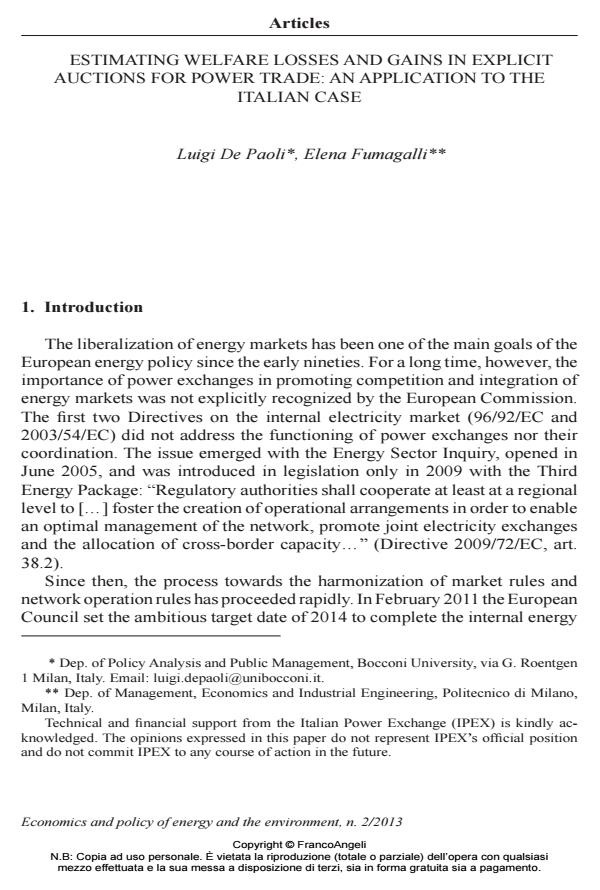Estimating welfare losses and gains in explicit auctions for power trade: an application to the Italian case
Journal title ECONOMICS AND POLICY OF ENERGY AND THE ENVIRONMENT
Author/s Luigi De Paoli, Elena Fumagalli
Publishing Year 2013 Issue 2013/2
Language English Pages 29 P. 153-181 File size 997 KB
DOI 10.3280/EFE2013-002009
DOI is like a bar code for intellectual property: to have more infomation
click here
Below, you can see the article first page
If you want to buy this article in PDF format, you can do it, following the instructions to buy download credits

FrancoAngeli is member of Publishers International Linking Association, Inc (PILA), a not-for-profit association which run the CrossRef service enabling links to and from online scholarly content.
Cross-border transmission capacities in Europe have been traditionally allocated via explicit auctions. As these will be replaced by implicit auctions, a relevant question regards the impact of this major transition on expected gains in social welfare. In this paper we study, first, the equations that describe the welfare loss associated with a suboptimal use of the transmission capacity. Second, by examining how suboptimal flows, and particularly adverse flows, change with the introduction of implicit auctions, we derive an original procedure that improves the accuracy of the welfare loss estimation when available market data are limited. Finally, we apply the proposed procedure to data pertaining to the Italian market and verify that for a net importer, such as Italy, the procedure derived in this work is particularly helpful in providing more accurate estimations of the welfare losses associated with explicit auctions. As implicit auctioning will eliminate these welfare losses, we interpret our results as a measure of the benefits associated with the current transition for the Italian market and use them to derive some more general implications.
Keywords: Electricity trade, Market coupling, social welfare.
Jel codes: Q43, L94, P48.
Luigi De Paoli, Elena Fumagalli, Estimating welfare losses and gains in explicit auctions for power trade: an application to the Italian case in "ECONOMICS AND POLICY OF ENERGY AND THE ENVIRONMENT" 2/2013, pp 153-181, DOI: 10.3280/EFE2013-002009